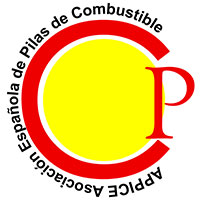Abstracts Submission
For the presentation of Communications, the following general guidelines will be followed:
- The Communications will be presented through the web following the indications that are included in the template.
- The delivery period ends on August 31th.
- The authors may choose the presentation mode (Oral or Short-Oral).
- The Organizing Committee, after the evaluation report issued by the Scientific Committee, reserves the right to award the Scientific Session and the mode of presentation of accepted communications.
- Submission of Presentations: will be sent through this website in ppt, pptx or pdf format before September 30th.
- A «Communications Book» will be published, edited by APPICE (with ISBN), which will include all accepted papers. It will be mandatory that at least one of its authors be registered to the Congress.
- The journal Polymers (IF 4,967, JCR-Q1) will publish a special volume entitled «Hydrogen and Fuel Cells: Clean and energy efficiency» in which all authors who wish to participate may do so
The theme of IBERCONAPPICE 2023 will review both the basic and technological aspects and their final applications. It will also include topics related to market analysis, security, regulations, marketing, politics and communication.
The works will be grouped in the following topics:
- BT: Low Temperature Fuel Cells (PEMFC, HT-PEMFC, DMFC, DEFC …)
- Components (catalysts, electrodes, electrolytes, interconnections, GDLs, bipolar plates, etc.)
- Methods of manufacturing components
- Water Administration
- Design. Modeling
- Balance of Plant (compressors, humidifiers, etc.)
- Cost reduction
- Improvement of durability
- Operation under extreme temperatures
- Manufacturing at high volume
- AT: High Temperature Fuel Cells (SOFC, IT-SOFC, MCFC, DFC …)
- Components (anodic materials, cathode materials, electrolytes, interconnections, etc.)
- Methods of manufacturing components
- Design. Modeling
- Balance of Plant (compressors, humidifiers, etc.)
- Cost reduction
- Improvement of durability
- H2: Hydrogen
- Production from different methods (reformed, electrolysis, gasification, photobiological, photoelectrochemical, nuclear …) and raw materials (natural gas, methanol, ammonia, ethanol, synga, biogas, borohydrides …)
- Cleaning systems: WGS, COPROX, hydrodesulfurization …
- Carbon sequestration / sequestration and use of CO2
- Balance of plant. System design.
- Engineering. Modeling
- Storage: physical (tanks, boats), based on materials, large-scale storage
- Gas compression technologies
- Distribution
- Standardization of components
- Manufacturing of components
- AP:Applications:
- Stationary: Small scale. Big scale. Utilities Distributed power. Reversible / Regenerative Micro networks. Network interconnections …
- Remote. Laptops: Portable and micro cells. Uninterruptible power supplies (UPS). Off the grid. Self-consumption Support for. APUs. Electronics. Regulator…
- Transportation: Light, medium-duty, heavy vehicles. Off-road and special. Railway. Marine. Aircraft. Unmanned vehicles – drones, land, sea
- Hydrogen recharge stations: Coordinated deployment of vehicles and stations. New station location solutions. Cost reduction / modeling Components (nozzles, hoses, dispensers, sensors, tanks, etc.).
- Power to gas (P2G)
- MSN: Market analysis. Security. Normative
- Market Analysis: Production, storage and supply of hydrogen. Fuel cells. Transport. Material handling and logistics. Transition to the market. Cost / benefit and politics. Job. Work plans for deployment / strategies. Integration with other technologies (microgrids, batteries, solar / wind)
- Security. Regulations: Model codes (codes I, NFPA). National standards and best practices. State and regional implementation. International standards and activities. Research supporting codes and standards. Education and training Security systems, including tests and design challenges. Specification of hydrogen quality. Global harmonization Case studies and lessons learned in permits and facilities
- CPC: Commercialization. Politics. Communication
- Marketing: Business plans, start-up and growth. Venture Capital, capital, PPA, other forms of capital and financing. Transition from an R & D approach to commercialization. Intellectual and patent property. Manufacturing and supply chain. Business expansion, cross-border relationships. Opening new markets.
- Policy: Programs and plans at all levels. International (multinational), European, national, regional initiatives. Tax incentives and financing opportunities. Permits / Regulatory issues. Results of the current legislation.
- Communication: New disclosure techniques to new markets / customers. Web tools and social networks. Media – rapid response and proactive disclosure. Education problems and opportunities

